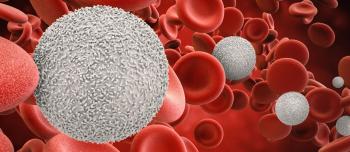The International Society on Thrombosis and Hemostasis (ISTH) recently developed a new tool to help clinicians identify and measure the severity of bleeding symptoms. The Bleeding Assessment Tool (BAT) was created jointly by ISTH and a permanent committee of the society, the Scientific Standardization Committee (SCC). The SCC has independent authority over its scientific program and reports to the ISTH Council. ISTH/SCC therefore designed a study to evaluate the ISTH-BAT and its capacity to determine severity of the bleeding symptoms in both newly diagnosed and previously diagnosed hemophilia patients.
“Evaluating the presence and severity of bleeding symptoms is a fundamental step in the assessment of patients’ clinical outcomes. The ISTH/SSC joint committee established a BAT to standardize the reporting of bleeding symptoms,” stated the study authors.
Investigators compared bleeding scores in adult and pediatric groups and studied correlations to factor levels. Included in the cross-sectional study were 115 hemophilia patients (78 with hemophilia A, 37 with hemophilia B and 100 healthy control individuals. The lead author of the study was Dr. Munira Borhan, Department of Hematology, Haemostasis & Thrombosis at National Institute of Blood Disease & Bone Marrow Transplantation, Karachi, Pakistan
Results showed that bleeding scores were significantly higher in patients with hemophilia A or B compared to healthy control individuals, though they were identical between patients with hemophilia A and B, and between newly and previously diagnosed patients. In addition, bleeding scores among pediatric patients and those with milder forms of hemophilia were lower than in adults and those with severe symptoms.
The tool has its limitations, as the authors acknowledge. “The use of bleeding assessment tool still has limitations within the pediatric population. In this study, as expected, the bleeding scores were higher in adults compared to children, as they would naturally accumulate more bleeding symptoms and experience more hemostatic challenges like trauma and post-surgical bleeds,” explained the investigators.
While the investigators emphasize the tool’s more immediate utility – it could be easily employed to identify which patients need clinical follow up – they go on to suggest that further research may lead to expanded applications.
“Our ongoing study will show whether the score can predict the risk for bleeding in pediatric and/or adult hemophilia patients. Similarly, future research is needed to assess the predictive ability of ISTH for bleeding risk in patients with hemophilia,” concluded the authors.
The study, “Application of the ISTH Bleeding Score in Hemophilia,” was published in the journal Transfusion and Apheresis Science.
Source: Hemophilia News Today, January 23, 2019





